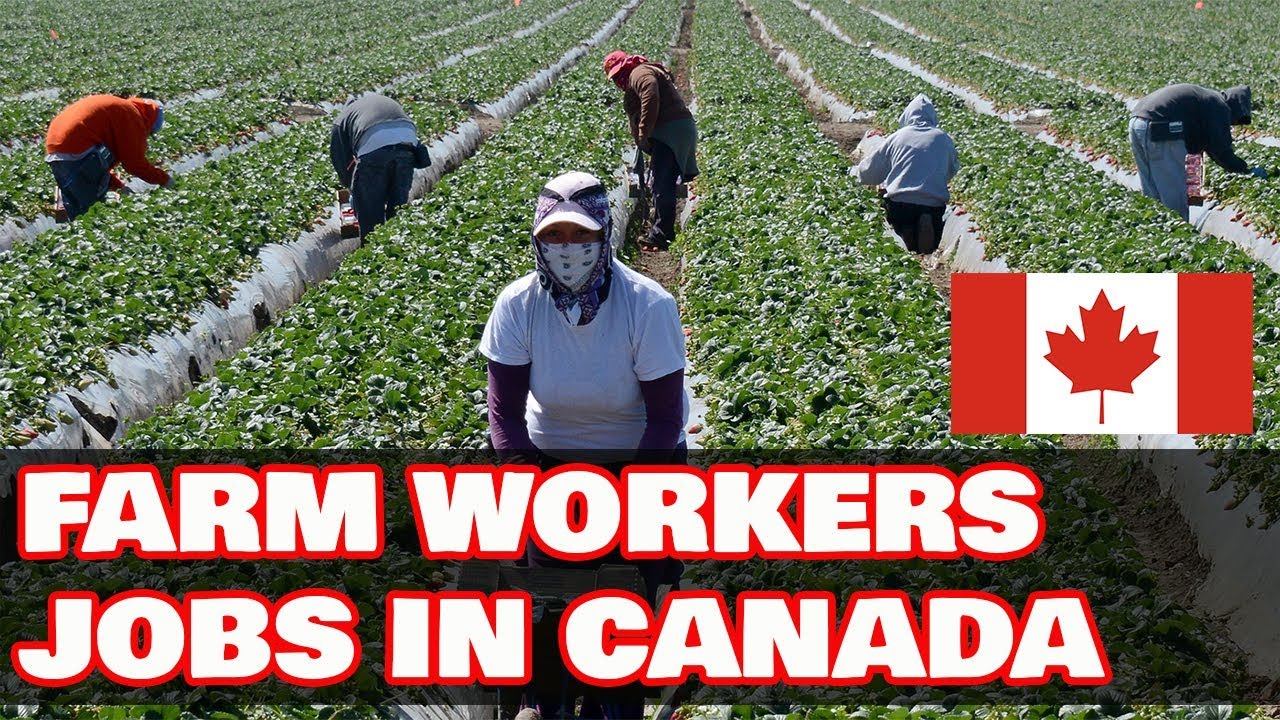Are you an Indian professional, a global worker, or an employer eyeing Canada’s vibrant job market? If so, you’ve likely stumbled across the term LMIA—a critical piece of Canada’s immigration puzzle. The Labour Market Impact Assessment (LMIA) is a gateway for foreign workers to secure work permits and for employers to hire talent from abroad. But what exactly is it, and why does it matter?
This guide dives deep into the world of LMIAs, breaking down its purpose, process, costs, and impact on Canada’s workforce. Written with a human touch, we’ll explore real-world scenarios, share actionable insights, and answer burning questions to help you navigate this complex system. Whether you’re a worker dreaming of Canada’s opportunities or an employer seeking global talent, this article is your roadmap to understanding LMIAs in 2025. Let’s get started!
Understanding the LMIA: What It Is and Why It Exists
A Labour Market Impact Assessment (LMIA) is a document issued by Employment and Social Development Canada (ESDC) that evaluates whether hiring a foreign worker will positively, neutrally, or negatively impact the Canadian labour market. It’s a cornerstone of Canada’s Temporary Foreign Worker Program (TFWP), ensuring that employers prioritize Canadian citizens and permanent residents before looking overseas.
Think of the LMIA as a gatekeeper. It asks employers: “Have you tried hiring locally? Will this foreign worker fill a genuine labour shortage without harming Canadian jobs?” If the answer is yes, ESDC issues a positive LMIA, allowing the worker to apply for a work permit. If not, a negative LMIA blocks the hire.
Why Does Canada Use LMIAs?
Canada’s economy thrives on balance—protecting local jobs while embracing global talent. The LMIA ensures:
- Job Protection: Canadians and permanent residents get first dibs on job opportunities.
- Economic Growth: Employers can fill critical labour shortages in industries like healthcare, tech, and agriculture.
- Fair Treatment: Foreign workers are paid market wages and work in safe conditions.
For example, imagine a tech startup in Vancouver struggling to find a specialized AI developer locally. An LMIA allows them to hire a skilled Indian engineer, boosting innovation without displacing Canadian workers.

Image: A diverse Canadian workplace thriving with global talent. Source: Unsplash
Types of LMIAs: Which One Fits Your Needs?
LMIAs come in various streams, each tailored to specific job types, industries, or worker categories. Understanding these streams is crucial for employers and workers alike. Here’s a breakdown:
1. High-Wage Stream
- Purpose: For jobs paying above the provincial median hourly wage (e.g., CAD 27.88 in Ontario for 2025).
- Examples: Software engineers, doctors, or executives.
- Requirements: Employers must prove extensive recruitment efforts and a Transition Plan to train Canadians for the role long-term.
- Use Case: Ideal for skilled professionals like an Indian IT specialist hired by a Toronto firm.
2. Low-Wage Stream
- Purpose: For jobs paying below the provincial median wage.
- Examples: Retail workers, caregivers, or farm laborers.
- Requirements: Stricter rules, including a cap on foreign workers (10–20% of the workforce) and proof of local hiring attempts.
- Use Case: A Manitoba farm hiring seasonal workers from the Philippines.
3. Agricultural Stream
- Purpose: For farm workers under programs like the Seasonal Agricultural Worker Program (SAWP).
- Examples: Fruit pickers, greenhouse workers.
- Requirements: Employers provide housing, transportation, and adhere to seasonal contracts (up to 8 months).
- Use Case: Mexican workers harvesting apples in British Columbia’s Okanagan Valley.
4. Global Talent Stream
- Purpose: Fast-tracked for high-demand tech or innovative roles under the Global Skills Strategy.
- Examples: AI researchers, blockchain developers.
- Requirements: Employers work with designated partners (e.g., tech hubs) and commit to job creation or skill development.
- Use Case: A Vancouver startup hiring a German data scientist in just 2 weeks.
5. In-Home Caregiver Stream
- Purpose: For caregivers supporting children, seniors, or people with disabilities.
- Examples: Nannies, live-in caregivers.
- Requirements: Full-time employment, live-in arrangements (optional), and a pathway to permanent residency.
- Use Case: A Filipino caregiver supporting an elderly couple in Calgary.
Each stream has unique rules, so employers must choose wisely. Workers, meanwhile, rely on their employer’s LMIA application to secure a work permit.
 Image: Agricultural workers play a vital role in Canada’s economy.
Image: Agricultural workers play a vital role in Canada’s economy.
The LMIA Process: Step-by-Step Guide for 2025
Securing an LMIA is a multi-step journey that requires coordination between employers and workers. Here’s how it works:
Step 1: Job Advertisement
Employers must advertise the job for at least 4 weeks across multiple platforms (e.g., Job Bank, Indeed, LinkedIn) to prove no qualified Canadians applied. For high-wage roles, ads must target underrepresented groups (e.g., youth, Indigenous workers).
Step 2: Submit LMIA Application
Employers apply through the ESDC Employer Portal or mail, submitting:
- LMIA Application Form (specific to the stream).
- Proof of Recruitment: Screenshots of job ads, applicant summaries.
- Business Documents: Business license, tax records.
- Job Offer: Details of wages, duties, and conditions.
- Transition Plan (high-wage stream): Steps to reduce reliance on foreign workers.
Cost: CAD 1,000 non-refundable processing fee per position, waived for some streams (e.g., caregivers).
Step 3: ESDC Review
ESDC assesses the application based on:
- Labour Market Impact: Will the hire benefit or harm Canadian workers?
- Recruitment Efforts: Did the employer try hard enough locally?
- Wages and Conditions: Are they fair and market-aligned?
- Job Creation: Will the hire support broader economic goals?
Processing takes 10 business days for Global Talent Stream, 2–3 months for other streams.
Step 4: LMIA Outcome
- Positive LMIA: Employer receives a letter approving the hire. The worker uses this to apply for a work permit via IRCC.
- Negative LMIA: The hire is denied, often due to insufficient recruitment or negative market impact. Employers can reapply after addressing issues.
Step 5: Work Permit Application
The worker applies for a work permit through IRCC, submitting the positive LMIA, job offer, passport, and other documents. Processing takes 2–8 weeks, depending on the applicant’s country (e.g., India).
Step 6: Arrival in Canada
Once approved, the worker travels to Canada, undergoes border checks, and begins employment. The work permit is tied to the employer and job specified in the LMIA.
Real-World Example: Priya, an Indian nurse, lands a job in Alberta. Her employer spends 6 weeks advertising, applies for a high-wage LMIA, and secures approval in 10 weeks. Priya uses the LMIA to get a work permit, arriving in Calgary to start her new life.
Image: Learn more about the LMIA process in this insightful video. Source: YouTube
Costs of an LMIA: What to Expect
The LMIA process involves several costs, primarily borne by the employer, though workers may cover related expenses. Here’s a detailed breakdown for 2025:
Employer Costs
- LMIA Processing Fee: CAD 1,000 per position (non-refundable, except for caregivers or agricultural workers under specific programs).
- Recruitment Costs: CAD 500–2,000 for job ads, job fairs, or agency fees.
- Legal/Consultant Fees: CAD 1,000–5,000 if hiring immigration consultants.
- Transition Plan Costs: CAD 1,000–10,000 for training programs or local hiring initiatives (high-wage stream).
Worker Costs
- Work Permit Fee: CAD 155 (INR 9,400 or USD 113) per applicant.
- Biometrics: CAD 85 (INR 5,150 or USD 62) per person.
- Medical Exam: CAD 100–200 (INR 6,050–12,100 or USD 73–146).
- Police Clearance: CAD 50–100 (INR 3,025–6,050 or USD 36–73) per country.
- Travel to Canada: CAD 1,000–2,500 (INR 60,500–151,000 or USD 730–1,820) for flights from India.
Total Estimated Cost:
- Employer: CAD 2,500–18,000 per position.
- Worker: CAD 390–2,940 (excluding travel).
Tip: Some employers cover worker costs (e.g., medicals, flights) as part of the job offer. Clarify this upfront to avoid surprises.
Who Needs an LMIA? Exemptions and Alternatives
Not all foreign workers require an LMIA. Exemptions and alternatives exist to streamline hiring in specific cases.
LMIA-Exempt Work Permits
- Intra-Company Transfers: Employees of multinational companies (e.g., an Indian manager relocating to a Canadian branch).
- International Agreements: Workers under NAFTA, CETA, or other trade agreements (e.g., US consultants).
- Significant Benefit: Roles that bring cultural or economic value (e.g., artists, researchers).
- Reciprocal Employment: Jobs like camp counselors or youth exchange programs.
Open Work Permits
- Spouses of Skilled Workers: Partners of LMIA-based workers or students.
- Post-Graduation Work Permits (PGWP): For international students graduating from Canadian institutions.
- Refugee Claimants: Those awaiting asylum decisions.
Example Scenario
Amit, an Indian software developer, joins a Canadian tech firm via an intra-company transfer from his company’s Mumbai office. No LMIA is needed, as his role falls under the CUSMA (NAFTA successor) exemption, saving time and costs.
Challenges and Tips for a Successful LMIA Application
The LMIA process can be daunting, with potential pitfalls like rejections or delays. Here are common challenges and tips to overcome them:
Challenges
- Rejections: Negative LMIAs often result from weak recruitment efforts or failure to prove labour shortages.
- High Costs: The CAD 1,000 fee and recruitment expenses deter small businesses.
- Delays: Non-Global Talent Stream applications can take months, frustrating employers and workers.
- Complex Documentation: Transition Plans and recruitment summaries require meticulous detail.
Tips for Success
- Hire a Consultant: Immigration professionals can streamline applications, especially for high-wage or complex roles.
- Advertise Strategically: Use diverse platforms (Job Bank, Workopolis, local job boards) and target underrepresented groups.
- Prepare a Strong Transition Plan: Outline clear steps to train Canadians, like mentorship programs or apprenticeships.
- Double-Check Documents: Ensure all forms, job offers, and proofs are error-free to avoid delays.
- Communicate Clearly: Employers and workers should align on timelines, costs, and expectations.
Pro Tip: For workers, research employers with a history of successful LMIA applications. Check Canada’s Job Bank for LMIA-supported roles.
LMIA and Pathways to Permanent Residency
An LMIA isn’t just a ticket to a temporary job—it can pave the way to Permanent Residency (PR). Here’s how:
Express Entry Boost
A positive LMIA adds 50–200 CRS points to an Express Entry profile, significantly increasing your chances of an Invitation to Apply (ITA). For example:
- High-Wage LMIA: 50 points for a job offer.
- Senior Managerial LMIA: 200 points for executive roles.
Provincial Nominee Programs (PNPs)
Many PNPs prioritize LMIA holders. For instance, Alberta’s Opportunity Stream fast-tracks workers with valid work permits and LMIAs for PR nomination.
Caregiver Pathways
In-Home Caregiver Stream LMIAs lead to PR after 24 months of full-time work, ideal for Filipino or Indian caregivers.
Real-World Success Story
Maria, a Filipino caregiver, arrived in Ontario on an LMIA-based work permit in 2023. After two years of caring for a senior, she applied for PR through the Home Child Care Provider Pilot, gaining residency in 2025. Her LMIA was the first step to a new life.
Impact of LMIAs on Canada’s Economy and Workforce
LMIAs play a dual role: filling labour gaps and sparking debate. Let’s explore their impact:
Positive Impacts
- Economic Growth: LMIAs address shortages in critical sectors (e.g., 30% of Canada’s agricultural workforce is foreign).
- Innovation: Global Talent Stream LMIAs bring cutting-edge skills to tech hubs like Toronto and Vancouver.
- Diversity: Foreign workers enrich Canada’s multicultural fabric, from Indian nurses to Mexican farmhands.
Controversies
- Job Competition: Critics argue LMIAs sometimes bypass qualified Canadians, especially in low-wage sectors.
- Worker Exploitation: Some employers underpay or mistreat foreign workers, prompting stricter ESDC audits.
- Administrative Burden: Small businesses find the process costly and time-consuming.
Data Point: In 2024, ESDC issued over 100,000 LMIAs, with 40% in agriculture and 25% in tech. Audits led to 500 employer penalties for non-compliance, showing Canada’s commitment to fair treatment.
FAQs About LMIA in Canada in 2025
- What is an LMIA, and why is it needed?
An LMIA (Labour Market Impact Assessment) is a document proving that hiring a foreign worker won’t harm Canadian jobs. It’s required for most employer-specific work permits, ensuring labour shortages are genuine. - How much does an LMIA cost in 2025?
Employers pay a CAD 1,000 processing fee per position, plus CAD 500–2,000 for recruitment. Workers cover work permit fees (CAD 155), biometrics (CAD 85), and medicals (CAD 100–200). Caregiver/agricultural streams may waive fees. - How long does it take to get an LMIA?
Global Talent Stream takes 10 business days; other streams take 2–3 months. Delays occur if documents are incomplete or recruitment efforts are insufficient. Plan ahead to avoid frustration! - Can I apply for an LMIA myself as a worker?
No, only employers can apply for an LMIA through ESDC. Workers provide documents (e.g., resume, passport) and apply for a work permit after a positive LMIA is issued. - What happens if an LMIA is rejected?
A negative LMIA means the hire is denied, often due to weak recruitment or market impact concerns. Employers can reapply after addressing issues, like stronger job ads or a revised Transition Plan. - Do all foreign workers need an LMIA?
No, exemptions include intra-company transfers, NAFTA/CETA workers, or those with open work permits (e.g., spouses of students). Check IRCC’s website to see if you qualify. - Can an LMIA lead to Permanent Residency?
Yes! A positive LMIA adds 50–200 CRS points for Express Entry or supports PNP nominations. Caregivers can apply for PR after 24 months of LMIA-based work. - What are the requirements for an LMIA application?
Employers need proof of 4 weeks of job ads, a job offer with market wages, business documents, and a Transition Plan (high-wage stream). Workers provide resumes and qualifications. - Why do some employers avoid LMIAs?
The CAD 1,000 fee, recruitment costs, and 2–3 month wait deter small businesses. LMIA-exempt options like intra-company transfers are faster but limited to specific roles. - How can I increase my chances of a successful LMIA?
Employers: Advertise widely, submit error-free documents, and align with labour shortages. Workers: Target in-demand roles (e.g., tech, healthcare) and work with experienced employers.
Got LMIA questions? Drop them in the comments, and let’s unlock your Canadian work journey!
Why LMIAs Matter for Your Canadian Dream
The LMIA is more than paperwork—it’s a bridge to opportunity. For workers like Priya or Maria, it’s a chance to build a career in Canada’s thriving economy. For employers, it’s a tool to access global talent when local skills fall short. But success requires preparation, patience, and a clear understanding of the process.
As Canada’s job market evolves in 2025, LMIAs will remain pivotal, balancing economic needs with worker protections. Whether you’re navigating Express Entry, eyeing a PNP, or simply exploring job prospects, the LMIA is a stepping stone to your Canadian dream.
Disclaimer: LMIA requirements and fees can change. Always consult official sources like canada.ca or ESDC for the latest information. This guide is for informational purposes only. Read our full disclaimer for details.
Ready to dive into Canada’s job market? Share your LMIA experiences or questions below, and let’s make your journey a success!










